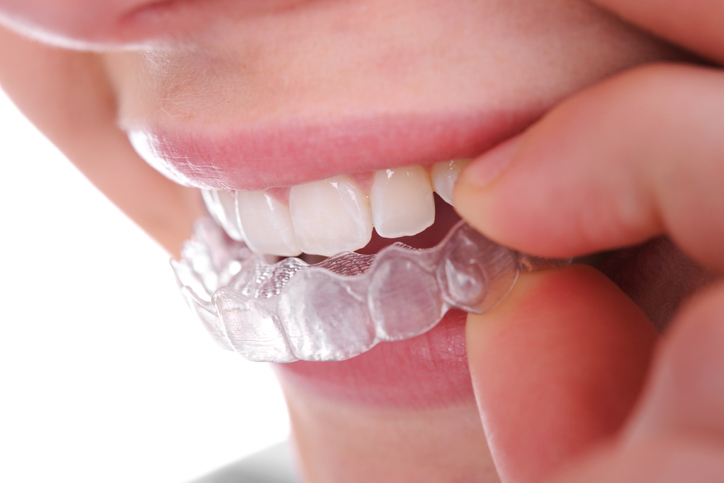
Do at-home aligners work just as well as braces? Learn the facts before you drop money on a kit first.
Let’s be honest, orthodontic treatment can be expensive. Yet you want to have the best smile possible, and that means straightening your teeth. In your search for cheaper alternatives to traditional and costly braces, you may have seen advertisements for at-home aligners.
However, at-home aligners may not be suitable for everyone, and they may not correct your teeth’s particular misalignment. Before you decide on an at-home aligner, you need to understand the risks and benefits, which we will go into detail below.
How At-Home Aligners Work
To start the process, the company will send you a dough-like molding material that you will use to take impressions of your teeth. You then send the mold back to the company, where a dentist will evaluate your teeth to determine if you are eligible for treatment. Some companies have retail establishments where you can get the impressions and 3D scans of your teeth made.
After a few weeks, you will receive a custom aligner along with your treatment plan. You will be instructed to wear the device for 22 hours each day, taking it off only to eat and drink. You should only drink water during the treatment period, which is typically six months. Once treatment is complete, you will wear a retainer to ensure your teeth stay in alignment.
During your treatment, you may consult virtually with the dental staff at the company. For people who tense up at the mere thought of going to a dentist’s office, that could be an advantage.
The clear plastic aligners apply gentle pressure on specific teeth to move them into place. If you want to correct a cosmetic problem, such as mild to moderate overcrowded or irregularly spaced teeth, at-home aligners may be an effective and less costly alternative than traditional braces. For more serious orthodontic issues like an overbite, an at-home alignment kit probably isn’t your best option.
The Drawbacks of At-Home Aligners
As with any medical therapy or device, you’ll want to know if it’s approved by the relevant professional organizations. The American Dental Association actually does not endorse the use of at-home or DIY aligners. In a post on its website, the American Dental Association states it “strongly discourages the practice of direct to the consumer dental laboratory services because of the potential for irreversible harm to patients.”
At-home aligners come with a number of drawbacks. Knowing the risks will help you make the right choice.
No In-Person Supervision. With at-home alignment kits, you have little, if any, in-person contact with a dentist or orthodontist. And that can lead to poor outcomes. In fact, if you have questions about your treatment plan, a customer service rep may be your only contact. On the other hand, when you visit an orthodontist, they can monitor your progress and adjust your braces or other appliances to ensure you get the results you want.
Improper Fit. With an at-home aligner, you get one chance to get the right fit. If it doesn’t fit your mouth correctly, you could end up with painful, bleeding gums. When your orthodontist makes the appliance, they can make alterations during several visits to create a truly customized device that slips over your teeth perfectly.
Poor Results. After all the expense of buying the at-home appliance and following the treatment plan, your teeth may still not be straight. That could be because your misalignment problem goes deeper than your teeth and starts in the jawline. If your at-home appliance is ineffective, you could worsen your orthodontic problems.
Using an at-home appliance is a personal decision. Before you send for the kit, speak to your dentist about whether an at-home alternative could help you. They can examine your teeth to remedy any cavities or gum problems before you start at-home treatment.
Your dentist can discuss other treatment options, such as Invisalign, which would be less noticeable than the traditional metal braces. Unlike at-home kits, Invisalign is supervised by a dental professional so you’ll get a custom fit.
Unfortunately, in some instances, your ordontic issues may be corrected only with braces. Your dentist or orthodontist can recommend treatment with your comfort and long-term dental health in mind.
Consult a Dentist First
Schedule an appointment at Espire’s Mission Valley location today! Our highly trained dentists can recommend an affordable treatment plan to give straight teeth.
Don’t live near our Mission Valley, California office? Find one of our other locations near you.
Mission Valley, CA
8989 Rio San Diego Drive
Suite 170
San Diego, CA 92108
